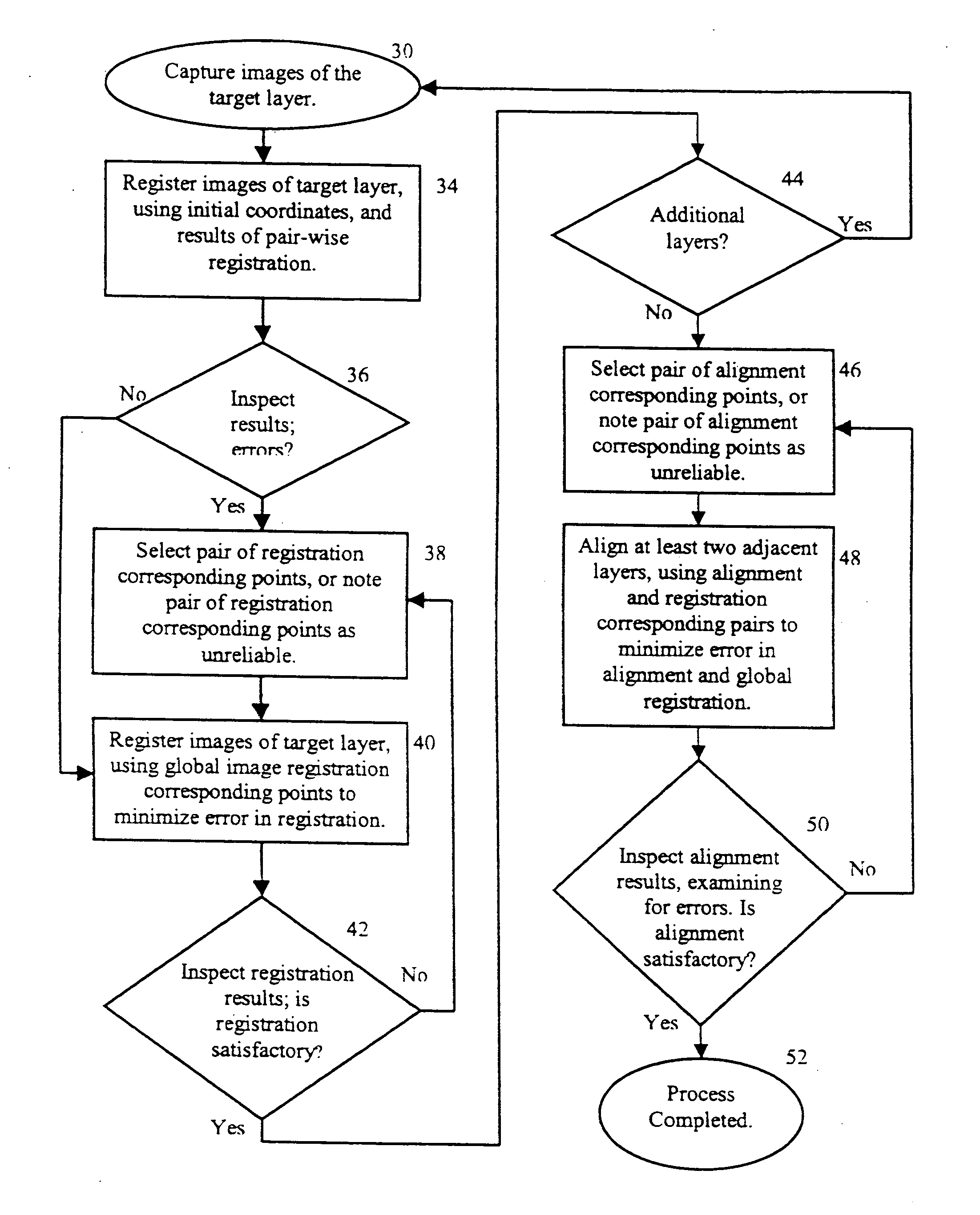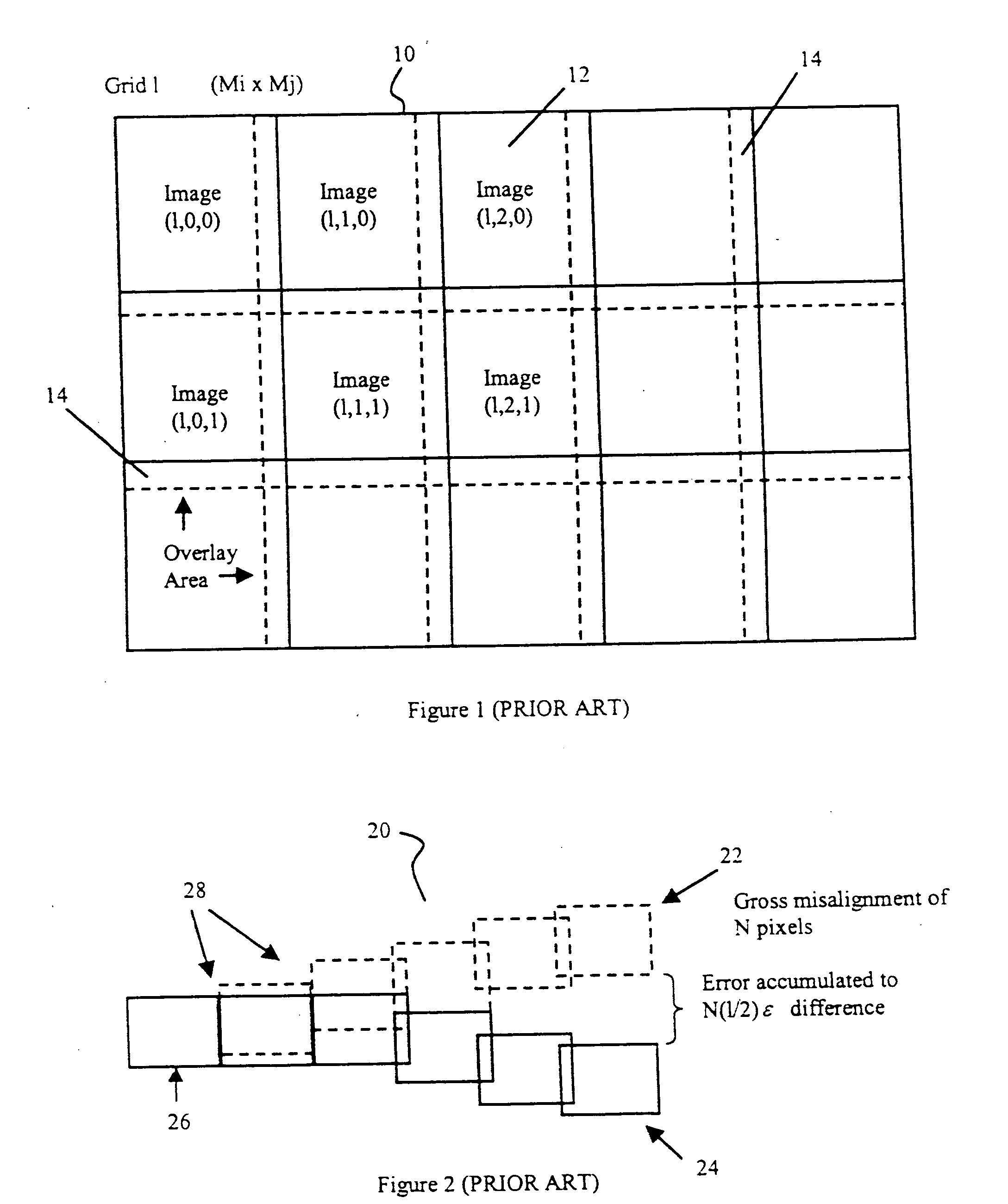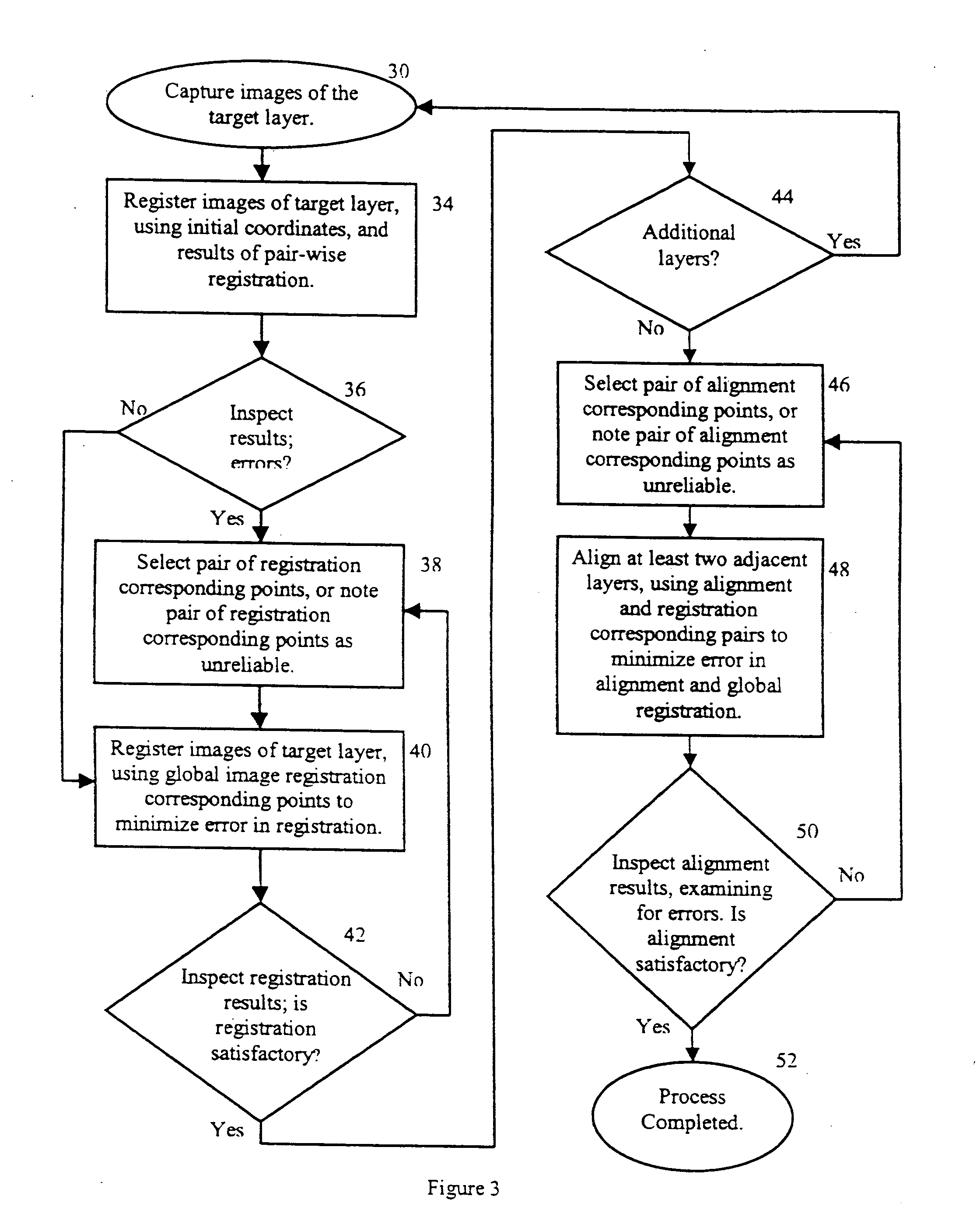Method of registering and aligning multiple images
a technology of multiple images and vertical alignment, applied in the field of registration and vertical alignment of multiple images, can solve the problems of insufficient information in the overlapping section of images to define relative coordinates with enough precision, introduce errors in analysis, and prior art that does not address several issues
- Summary
- Abstract
- Description
- Claims
- Application Information
AI Technical Summary
Benefits of technology
Problems solved by technology
Method used
Image
Examples
Embodiment Construction
[0043] For purposes of explanation, specific embodiments are set forth to provide a thorough understanding of the present invention. However, it will be understood by one skilled in the art, from reading this disclosure, that the invention may be practised without these specific details. Moreover, well-known elements, devices, process steps and the like are not set forth in detail in order to avoid obscuring the scope of the invention described.
[0044] In cases where a substantially planar object is to be imaged and the viewing area of the imaging device is smaller than the object area, the imaging may for example, be done in a three-dimensional matrix of images in the form of a plurality of layers 10, each comprising a matrix of smaller images corresponding to the viewing area of the imaging device, as shown in FIG. 1. An imaging system (not shown) designed for gathering images in such a fashion and known to those having ordinary skill in this art, captures each image and assigns i...
PUM
 Login to View More
Login to View More Abstract
Description
Claims
Application Information
 Login to View More
Login to View More - R&D
- Intellectual Property
- Life Sciences
- Materials
- Tech Scout
- Unparalleled Data Quality
- Higher Quality Content
- 60% Fewer Hallucinations
Browse by: Latest US Patents, China's latest patents, Technical Efficacy Thesaurus, Application Domain, Technology Topic, Popular Technical Reports.
© 2025 PatSnap. All rights reserved.Legal|Privacy policy|Modern Slavery Act Transparency Statement|Sitemap|About US| Contact US: help@patsnap.com



